X-Plane Lippisch DM-1
In 1944, Dr. Alexander Lippisch proposed the ramjet-powered delta wing P13a interceptor. In order to evaluate the aerodynamic performance of this radical design, Lippisch worked with the Darmstadt and Munich Akaflieg (aerodynamic engineering technical universities) to build the DM-1 glider. The D...
- Type
- Complete with Base Model
- Download hits
- 405
- Compatibility
- X-Plane 11
- Filename
- lippisch_dm-1.zip
- File size
- 58.58 MB
- Virus Scan
- Scanned 2 days ago (clean)
- Access to file
- Free (Freeware)
- Content Rating
- Everyone
In 1944, Dr. Alexander Lippisch proposed the ramjet-powered delta wing P13a interceptor. In order to evaluate the aerodynamic performance of this radical design, Lippisch worked with the Darmstadt and Munich Akaflieg (aerodynamic engineering technical universities) to build the DM-1 glider. The DM-1 is a pure delta wing design with no separate fuselage and the pilot seated in a large vertical stabilizer. It was designed to be launched by aircraft piggy-back, tow or rocket boost.
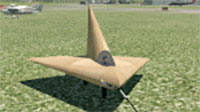 The construction of the DM-1 was not complete by the end of WWII but the allies asked the students at Darmstadt and Munich Akaflieg to finish the aircraft in order to allow further research. The completed aircraft was taken to the US and evaluated by NACA in wind tunnel tests. The results of those tests contributed to future work on delta wing designs including the Convair XF-92, F-102 Delta Dagger and F-106 Delta Dart.
The construction of the DM-1 was not complete by the end of WWII but the allies asked the students at Darmstadt and Munich Akaflieg to finish the aircraft in order to allow further research. The completed aircraft was taken to the US and evaluated by NACA in wind tunnel tests. The results of those tests contributed to future work on delta wing designs including the Convair XF-92, F-102 Delta Dagger and F-106 Delta Dart.
This X-Plane model recreates the DM-1 glider using data from the postwar analysis, historical documentation and the National Air and Space Museum (who currently holds the aircraft).
Features:
- Detailed 3D and aerodynamic model based on NACA post-war reports.
- Custom NACA 0015-64 and NACA 0017.5-64 airfoils.
- Detailed, fully animated, virtual cockpit based on Dabrowski and National Air and Space Museum photographs.
- Exterior textures based on Dabrowski and National Air and Space Museum photographs.
- Rheinmetall-Borsig RI 502 solid-fuel JATO assist (LM-1R).
- Custom high-resolution WWII German metric instruments.
- Landing gear animation.
- High resolution textures.
- Multiple versions and liveries.
Pilot Notes:
- The LM-1 is a simple design but is surprisingly effective and fun to fly. However, it is not the typical glider.
- The instrument set consists of (left to right) an MZ (Center of Gravity) meter, a Vertical Velocity Indicator, Altimeter, Artificial Horizon/Compass and an Air Speed Indicator. All instruments are in German with metric units.
- Towed Launch: The LM-1 flies best above 150 km/h and requires at least 80 km/h to lift its own weight. The default Stinson L-5 tow plane struggles above an altitude of 1km. The Stinson L-5 Uprated has a more powerful engine making it a better choice. The Baron B58 or King Air C90B will provide higher tow speeds and reach altitudes above 1km.
- Takeoff: Set the longitudinal trim (wheel on the left) to neural or nose up (see note on trim). Hold the stick back to improve stability and allow liftoff as soon as possible. Liftoff is at about 100 km/h. The rear wheels are close together and the aircraft may wobble if the tow plane does not fly straight. Remember to raise the landing gear.
- Longitudinal (Pitch) Trim: The LM-1 has special trim elevators that are set buy the trim wheel on the left. Its orientation is the same as pitch on the control stick. It is defined as a flap in the simulation which may require reversing the axis to get the correct orientation. This functions in addition to the standard trim controls, which can also be used. If controls for this surface are not defined, the default is nose up which is flyable but causes some additional drag.
- Gliding: The LM-1 is a testbed for a supersonic jet and not a very good glider. It will not glide at neutral stick. Longitudinal trim works but is not very effective. Setting the trim to neutral and pulling the stick back to attain airspeed of 100 km/h gives the lowest sink rate of about 3.5 m/s.
- Landing: Landing speed is about 80 km/h and requires a high angle of attack. Use the nose window to see the runway. The best sink rate for the LM-1 is still a hard landing. It is best to approach the runway at about 150 km/h, get the aircraft right above the runway, then ease the stick back to reduce speed before touch down. Note that the aircraft has a light nose that tends to pitch up even after landing. Use as much stick as possible to reduce speed without scraping the rear.
- Control Configuration: Configure the control stick for pitch and roll, rudder pedals for yaw and brakes. Set the flaps to control reversed (see note on Longitudinal Trim). The longitudinal trim is operated by the flap controls but operates in the same direction as the stick (reversed from normal flaps).
- CG Control: The DM-1 included a dynamic ballast adjustment (red lever in the cockpit) that transferred 35 liters of water from tanks in the nose and tail to adjust the center of gravity. This is implemented by pulling the lever with the mouse and observing the effect on CG on the MZ (Massezentrum) instrument on the panel. The lever allows adjustment of the center of gravity 0.3 m (~1 ft) fore and aft. The lever position and instrument also indicates the current CG setting from the Edit Weight and Balance screen.
- The default livery is wood textured. Dabrowski states that the aircraft was finished only with a clear sealant. An alternate white livery is provided that is similar to the current aircraft at the National Air and Space Museum. The white coating was likely applied during NACA tests to reduce drag.
- A version for X-Plane 10 is provided as a separate download.
DM-1R:
Historical sources suggest that rocket assist was planned to test the aerodynamics at speeds unattainable by piggy-back glider launch. However, the lightweight and simple wood construction of the aircraft makes the use of rocket motors problematic. The popular HWK 109-500 Starthilfe JATO unit provides long duration thrust but weights more than half the static weight of the base aircraft. A more feasible approach is to use the Rheinmetall-Borsig RI 502 solid-fuel JATO rockets which provide 1300 lbs. thrust for 6 seconds.
An experimental rocket-assisted version of the DM-1 is included that utilizes a pair of RI 502 JATO units fired sequentially to give 12 seconds of thrust at 1300 lbs./second. The units are mounted on the bottom of the aircraft between the landing gear. This mounting maintains the center of gravity and utilizes the strength of the landing gear structure to support the motor thrust. The dry weight of the aircraft remains the same by removing the water ballast and some related equipment to compensate for the added weight of the engine casings. The fuel load is an additional weight that pushes the limits of the aircraft's capacity but provides up to 300 km/h additional performance.
The rockets are activated using the X-plane sim/flight_controls/ignite_jato command. The RI 502 JATO units are defined as drop tanks and can be jettisoned using the sim/flight_controls/drop_tank command (once for each rocket motor). However, X-plane does not simulate the weight reduction from dropping the casings.
Note that X-Plane models JATO fuel as an expendable associated with loading of the aircraft model. If you want to make multiple flights with JATO you must reload the aircraft (Developer/Reload the Current Aircraft) to refuel. Just Start[ing] a New Flight does not reload the JATO units.
Credits:
- Flight model, high res textures, custom instruments, cockpit design and custom objects - Horten229
- WWII Artificial Horizon Ju-88 - Norvell
- Pilot olblucat (from the Ho-X)
Author:
Fred Highland
The archive lippisch_dm-1.zip has 89 files and directories contained within it.
File Contents
This list displays the first 500 files in the package. If the package has more, you will need to download it to view them.
| Filename/Directory | File Date | File Size |
|---|---|---|
| Airfoils | 08.09.17 | 0 B |
| NACA 0015-64.afl | 07.21.17 | 25.21 kB |
| NACA 0017.5-64.afl | 07.25.17 | 25.21 kB |
| Cockpit | 08.09.17 | 0 B |
| compass | 08.08.17 | 0 B |
| generic | 08.09.17 | 0 B |
| alt_baro_german.png | 04.09.17 | 235 B |
| alt_baro_german-1.png | 04.11.17 | 13.96 kB |
| alt_german.png | 04.09.17 | 58.36 kB |
| alt_german_x10.png | 01.24.17 | 1.75 kB |
| alt_german_x10-1.png | 01.24.17 | 5.44 kB |
| alt_german-1.png | 01.12.17 | 5.37 kB |
| ASI_german.png | 02.05.17 | 59.30 kB |
| ASI_german-1.png | 01.12.17 | 5.37 kB |
| VVI_german.png | 01.26.17 | 55.84 kB |
| VVI_german-1.png | 01.12.17 | 5.37 kB |
| -PANELS- | 08.09.17 | 0 B |
| Panel_Glider.png | 07.12.17 | 366.13 kB |
| standard six | 08.09.17 | 0 B |
| airspeed | 05.03.17 | 0 B |
| altimeters | 05.03.17 | 0 B |
| artificial horizons | 08.09.17 | 0 B |
| all_attitude.png | 01.09.17 | 31.60 kB |
| all_attitude.txt | 01.09.17 | 195 B |
| all_attitude-1.png | 04.13.17 | 19.51 kB |
| all_attitude-2.png | 01.09.17 | 11.57 kB |
| all_attitude-3.png | 01.09.17 | 8.48 kB |
| all_attitude-4.png | 03.22.17 | 8.84 kB |
| HSIs | 03.16.17 | 0 B |
| turn slip | 03.16.17 | 0 B |
| vertical speed | 03.16.17 | 0 B |
| supplement | 08.09.17 | 0 B |
| CG_indicator.png | 08.08.17 | 5.54 kB |
| CG_indicator-1.png | 12.02.16 | 3.07 kB |
| CG_indicator-4.png | 08.08.17 | 1.23 kB |
| DM-1.acf | 08.09.17 | 821.65 kB |
| DM-1_cockpit.obj | 08.09.17 | 4.31 kB |
| DM-1_cockpit.png | 08.08.17 | 2.32 kB |
| DM-1_icon11.png | 08.09.17 | 246.86 kB |
| DM-1_icon11_thumb.png | 08.09.17 | 17.19 kB |
| DM-1_paint.png | 08.09.17 | 13.34 MB |
| DM-1_paint2.png | 08.02.17 | 349.20 kB |
| DM-1R.acf | 08.09.17 | 939.79 kB |
| DM-1R_cockpit.obj | 08.08.17 | 4.31 kB |
| DM-1R_cockpit.png | 08.08.17 | 2.32 kB |
| DM-1R_icon11.png | 08.09.17 | 250.25 kB |
| DM-1R_icon11_thumb.png | 08.09.17 | 17.50 kB |
| DM-1R_paint.png | 08.09.17 | 13.34 MB |
| DM-1R_paint2.png | 08.02.17 | 349.20 kB |
| Liveries | 08.09.17 | 0 B |
| White | 08.09.17 | 0 B |
| DM-1_icon11.png | 08.09.17 | 105.37 kB |
| DM-1_icon11_thumb.png | 08.09.17 | 12.49 kB |
| DM-1_paint.png | 08.09.17 | 574.57 kB |
| DM-1R_icon11.png | 08.09.17 | 107.53 kB |
| DM-1R_icon11_thumb.png | 08.09.17 | 12.79 kB |
| DM-1R_paint.png | 08.09.17 | 574.57 kB |
| Objects | 08.09.17 | 0 B |
| Landing_Gear.png | 08.08.17 | 3.97 kB |
| Objects | 08.09.17 | 0 B |
| cockpit_shell.obj | 08.08.17 | 46.64 kB |
| cockpit_shell.png | 08.06.17 | 17.11 MB |
| front_gear_door.obj | 08.08.17 | 1.90 kB |
| Landing_Gear.png | 08.08.17 | 1.88 MB |
| landing_gear_ballast.obj | 08.07.17 | 103.15 kB |
| landing_gear_ballast.png | 08.07.17 | 2.57 MB |
| Landing_Gear_White.png | 08.08.17 | 3.97 kB |
| left_gear_door.obj | 08.08.17 | 1.53 kB |
| right_gear_door.obj | 08.08.17 | 1.53 kB |
| skeleton_rudder_pedals.obj | 07.30.17 | 14.68 kB |
| skeleton_rudder_pedals.png | 07.27.17 | 2.25 MB |
| stick.obj | 07.28.17 | 22.59 kB |
| stick.png | 07.26.17 | 2.10 MB |
| trim_wheel.obj | 08.03.17 | 13.91 kB |
| trim_wheel.png | 07.27.17 | 708.98 kB |
| windshield.obj | 08.08.17 | 34.38 kB |
| windshield.png | 08.08.17 | 28.40 kB |
| ww2_pilot.obj | 07.29.17 | 400.10 kB |
| ww2_pilot.png | 12.13.16 | 299.22 kB |
| Weapons | 08.09.17 | 0 B |
| RI-502.png | 08.09.17 | 2.89 MB |
| RI-502.wpn | 08.09.17 | 83.88 kB |
| RI-502.wpn.obj | 08.08.17 | 14.63 kB |
| RI-502.WPN~ | 08.08.17 | 81.32 kB |
| FILE_ID.DIZ | 08.10.17 | 247 B |
| Lippisch DM-1 Description.txt | 08.10.17 | 7.95 kB |
| Lippisch_DM-1.gif | 08.10.17 | 9.42 kB |
| flyawaysimulation.txt | 10.29.13 | 959 B |
| Go to Fly Away Simulation.url | 01.22.16 | 52 B |
Installation Instructions
Most of the freeware add-on aircraft and scenery packages in our file library come with easy installation instructions which you can read above in the file description. For further installation help, please see our Flight School for our full range of tutorials or view the README file contained within the download. If in doubt, you may also ask a question or view existing answers in our dedicated Q&A forum.
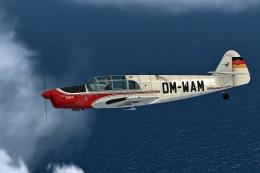
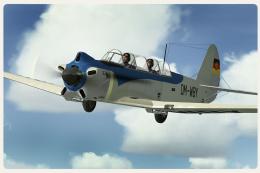
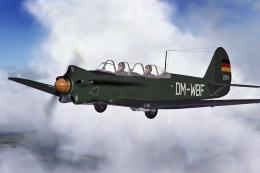
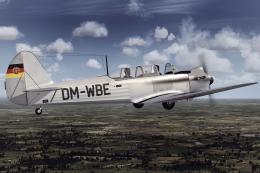
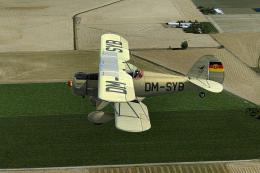


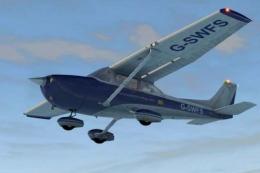
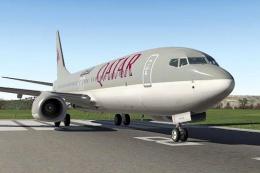
0 comments
Leave a Response